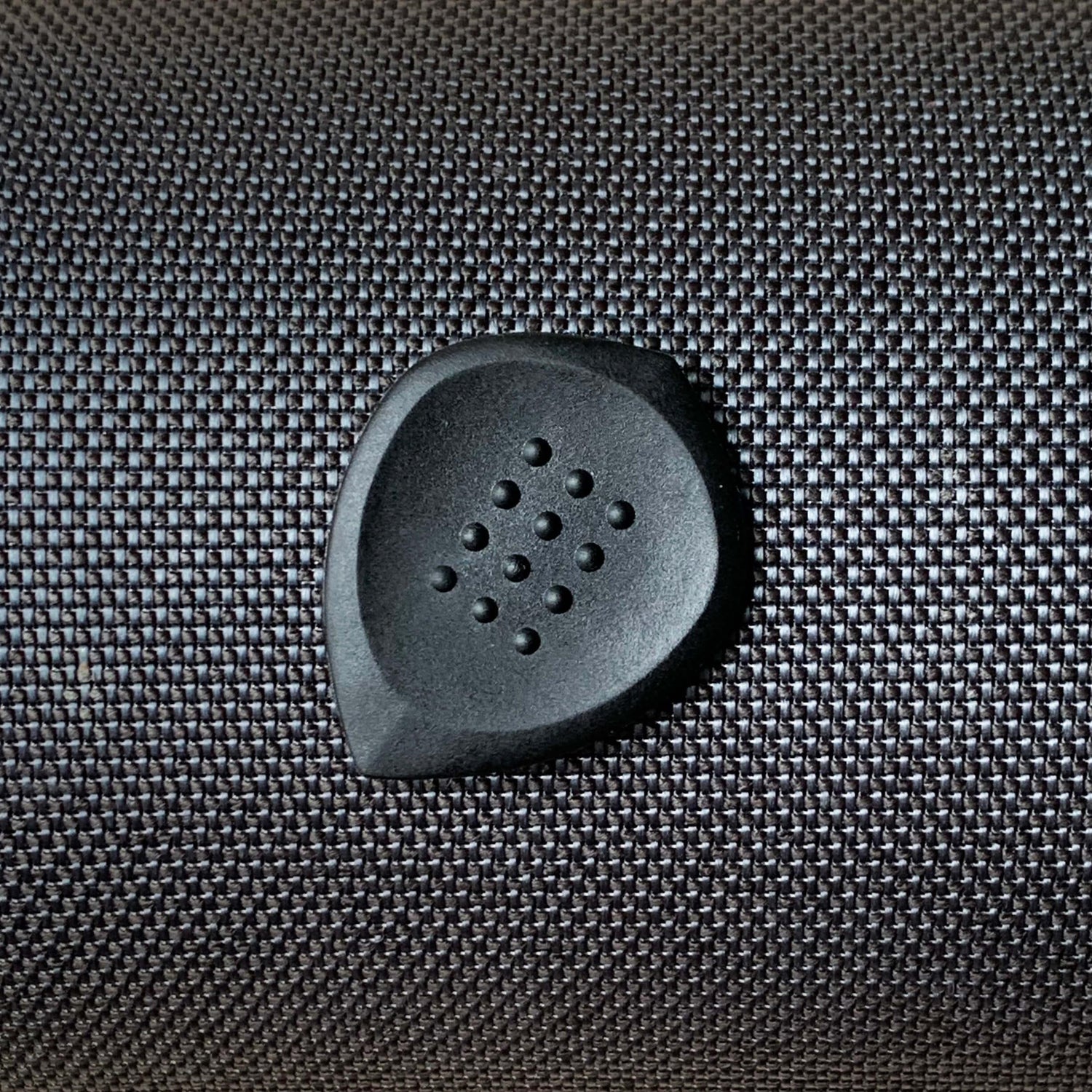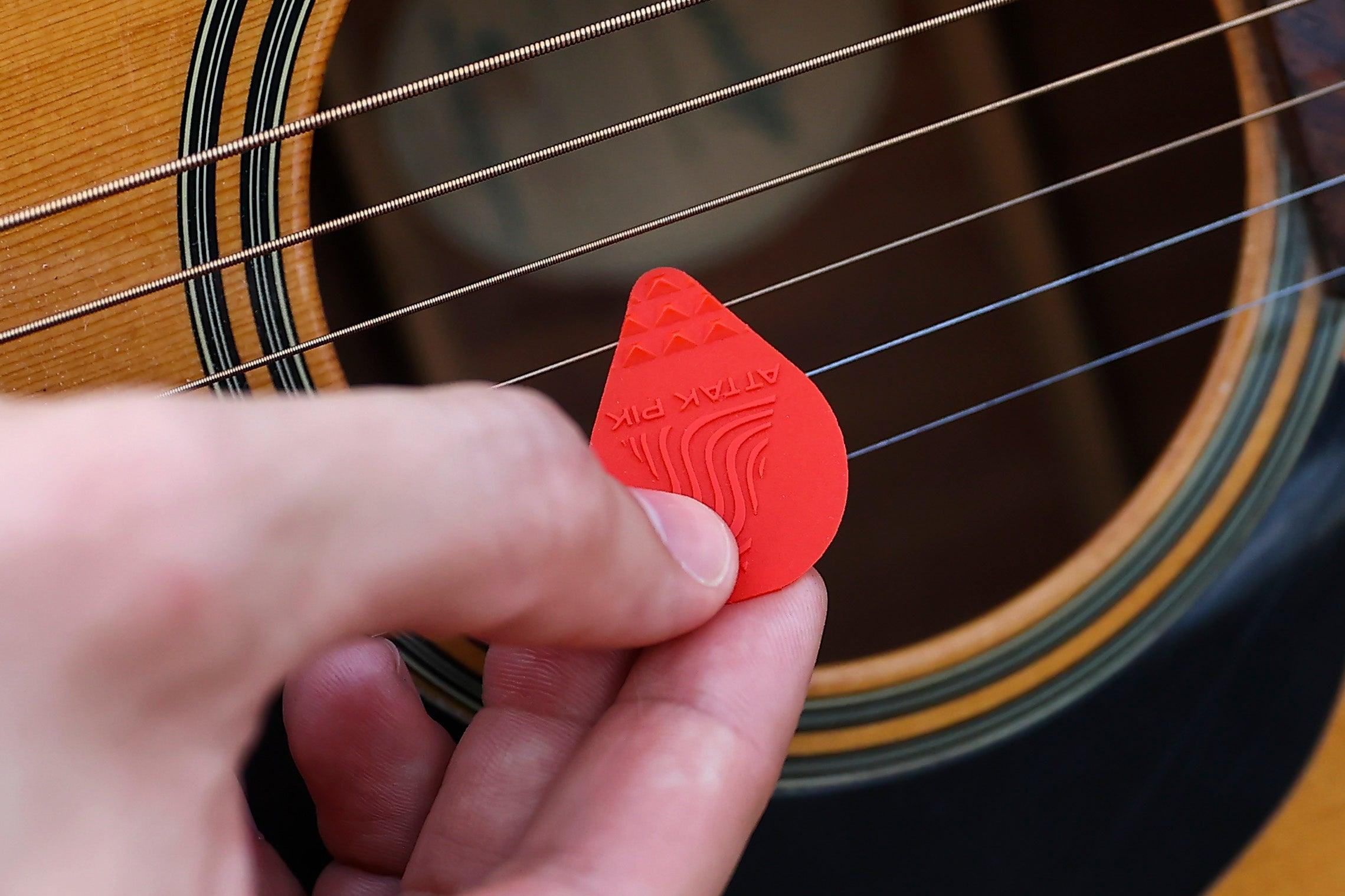If you play the electric guitar, you know how important it is to have good picks. The right pick can make a world of difference in your playing. And if you’re a serious player, you probably have a few favorite picks to play with.
You know them and love them — the way they flick between your fingertips and strike against the strings. But what happens when those picks lose their edge? When does it get to the point where it's time to retire our trusty friends?
To help you decide whether or not it's time to retire your favorite pick, we answer all these questions and more in the blog below. We’ll discuss:
- Signs It’s Time to Buy New Electric Guitar Picks
- Worn In Picks vs. Worn Out Picks
- What Wears an Electric Guitar Pick Down?
- How to Find Durable Electric Guitar Picks
Signs It’s Time to Buy New Electric Guitar Picks
There are a few warning signs you should keep an eye out for when deciding if it's time to retire your pick. These include:
Sudden Snapping
One of the most obvious signs that a guitar pick is worn out is when it snaps in half while you’re playing. Sudden snapping happens when the point of contact between your strings and pick becomes too thin and brittle to hold its shape. When this occurs, the pick breaks off instead of bending.
String Buzz
If some strings buzz when you play them, then your current pick isn't thick enough for them (or maybe just not shaped quite right). Try switching up things like thicknesses or angles until everything sounds nice and smooth again.
Rounded Tip
A worn-out guitar pick will have lost its point. This can cause problems when strumming chords or playing lead lines. With a worn-down pick tip, you may find yourself missing notes that you usually have no problem nailing. When you do hit the notes, you'll notice they've started to sound dull and lifeless. This is a sign it's time to retire your beloved pick
Uneven Edges
Uneven pick edges can also negatively affect your guitar's sound quality and playability. The jagged edges can catch against the strings and disrupt your flow. So if you find your pick getting stuck in the strings, it's time to replace it.
Worn In Picks vs. Worn Out Picks
Guitar pick wear occurs naturally with playing. That said, there is a difference between a worn-in pick and a worn-out one.
 A worn-out pick has reached the end of its lifespan. It’s negatively affecting your sound quality and playing abilities. On the other hand, a worn-in pick is a sweet spot between brand-new and over-used.
A worn-out pick has reached the end of its lifespan. It’s negatively affecting your sound quality and playing abilities. On the other hand, a worn-in pick is a sweet spot between brand-new and over-used.
A worn-in pick is lighter and slightly more flexible than when brand-new. The more flexible and lightweight the pick is, and the smoother your finger’s motion has worn its grip over time, the warmer and mellower your sound will be.
When a guitar string vibrates in response to being struck by an older, worn-in electric guitar pick instead of ringing out cleanly like a new one would, those vibrations resonate over time into a deep and rich tone.
It's also important to point out here that since electric guitars are louder than acoustic ones (or at least they can be), using older electric guitar picks will help keep them from screeching out too much while still allowing them room for their unique qualities to shine.
What Wears an Electric Guitar Pick Down?
There are several factors that can lead to advanced wear and tear on your electric guitar pick, including:
Material
Many guitar picks are available on the market, but the most common materials used to make them are celluloid, nylon, and Delrin. Each material wears down at a different rate depending on how often you use them and how aggressively you play.
Nylon picks, for example, are flexible and durable. They’re easy to grip and last longer than other materials like celluloid. While celluloid picks provide a warm tone, they’re not as durable, so they may not last as long as you want them to.
Thickness
The thickness of your guitar pick will also affect its lifespan. Guitar picks typically come in one of four different gauges:
- Thin: 0.40mm to 0.60mm thick
- Medium: 0.60mm to 0.80mm thick
- Thick: 0.80mm to 1.20mm thick
- Extra Thick: 1.20mm+ thick
Thicker picks are more durable but may be too thick for some players' hands or playing styles.
If you're a shredder who wants to rip through fast electric guitar solos and other parts requiring incredible precision and speed, thicker picks with pointed tips will serve you best. However, you’ll still want a pick that’s thin enough to allow for smooth movement across the strings without causing them to buzz against each other during dynamic playing techniques like bending notes or switching chords.
Strings
The type of strings you have can wear your pick down more quickly. Thicker guitar strings will increase the area of contact with your pick and make it wear down faster. On top of this, aggressive playing techniques like pick slides will damage your guitar picks, too.
If you're playing with nylon strings and not steel, then it's likely that they'll wear out before the pick does. This is because nylon has less tension than steel and thus requires less force from the plectrum to move freely against the string.
How to Find Durable Electric Guitar Picks
Electric guitar picks can wear down quickly, but you don't need to replace them all the time. To steer clear of flimsy picks and find a durable one, look for one made from more rigid materials, more texture, and a larger surface area.
The Stealth Pick from Acoustik Attak is one such pick. Its pointed tip allows for unmatched precision in speed, alternate, and sweep picking. While this pick delivers a clearer tone, its exquisite ergonomic design sets the Stealth apart from competitors.
 Alternatively, you can check out the Blade Pick. This pick generates a compressed sound when plucking individual strings. Its rigidity instantly transmits power with harder playing, offering increased definition with a faster attack. It also allows overdrive and distortion effects to cut through the mix with more clarity while simultaneously lightening up the muddiness in the lows and low mids.
Alternatively, you can check out the Blade Pick. This pick generates a compressed sound when plucking individual strings. Its rigidity instantly transmits power with harder playing, offering increased definition with a faster attack. It also allows overdrive and distortion effects to cut through the mix with more clarity while simultaneously lightening up the muddiness in the lows and low mids.
If you're unsure if your picks are still in good shape, try testing them out in various situations like playing fast-paced songs or using multiple pick strokes in a row. If they don't perform well, then it's time to upgrade!
Whenever the time for an upgrade arrives — or you’re looking for something new to strike against your strings — Acoustik Attak will have the perfect pick waiting for you and your playing needs. Browse our electric guitar pick selection today!




Leave a comment
All comments are moderated before being published.
This site is protected by hCaptcha and the hCaptcha Privacy Policy and Terms of Service apply.